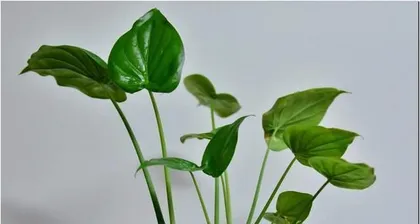Alocasia is one of the most popular potted plants, not only having ornamental value but also good air-purifying functions. However, for beginners who have never grown Alocasia before, it can be quite challenging to grow it well. This article will introduce the planting, care methods, and precautions for Alocasia, hoping it will be helpful to everyone.

Key Points for Choosing Alocasia Varieties
Before purchasing Alocasia, choose a suitable variety based on your growing environment and light conditions. Common Alocasia varieties include purple Alocasia, red Alocasia, pink Alocasia, etc. Additionally, select healthy Alocasia with thick leaves and free of pests and diseases.
Light Conditions for Alocasia
Alocasia is a shade-loving plant and thrives in diffused light. Intense sunlight can damage its leaves, causing them to turn yellow and wither. When growing at home, you can place it in a semi-shaded area or under a shading net.

Temperature Requirements for Alocasia
The optimal growth temperature for Alocasia is between 20-30°C, and avoid prolonged exposure to cold drafts. During summer heat, take appropriate measures to cool it down.
Water Management for Alocasia
Alocasia prefers moist soil but not dryness. Keep the soil consistently moist. However, do not overwater to prevent root rot. Generally, water once every 1-2 weeks, adjusting flexibly according to seasonal and temperature changes.
Fertilizer Application Methods
During the growth period of Alocasia, use fertilizers containing nitrogen, phosphorus, potassium, and other nutrients, applying once every 10-15 days. Liquid fertilizers are recommended as they can evenly cover the roots.

Pruning Techniques
Trimming yellow and withered leaves from Alocasia allows it to better absorb nutrients. You can also perform appropriate pruning to make its shape more aesthetically pleasing.
Pest and Disease Control
Common pests and diseases for Alocasia include aphids, spider mites, powdery mildew, etc. Once detected, take timely measures for control. Use insecticides and fungicides for spraying.
Propagation Methods for Alocasia
Alocasia can be propagated by division and leaf cuttings. Division is suitable for mature plants; dig out the plant and gently separate it. Leaf cuttings are suitable for young plants; cut off healthy leaves and insert them into soil with appropriate moisture.
Plant Pairing Choices for Alocasia
When planting Alocasia, it can be paired with other plants such as ivy and ferns. However, pay attention to avoiding interference between their growing environments.
Winter Management for Alocasia
During winter, Alocasia grows slowly and requires reduced watering and fertilization. Also, maintain indoor air circulation to avoid excessively low temperatures.
Flowering Period of Alocasia
The flowering period of Alocasia is generally between April and June each year. Pay attention to strengthening its care management during this period.
Care Precautions for Alocasia
During the growth process of Alocasia, pay attention to preventing mold and root rot. Maintain a well-ventilated environment with appropriate humidity, avoiding overwatering and excessive fertilization.
Common Problems and Solutions
Common problems include yellowing leaves and reduced flowering. These issues can be resolved by adjusting factors such as light, temperature, and water.
Beautification Effect of Alocasia
In a home environment, Alocasia can add a touch of greenery and purify indoor air, improving the living environment.
Alocasia is a relatively difficult potted plant to grow, but by following the above care methods and precautions, you can help it thrive healthily and bring endless beauty to your life.
<|end_of_box|>